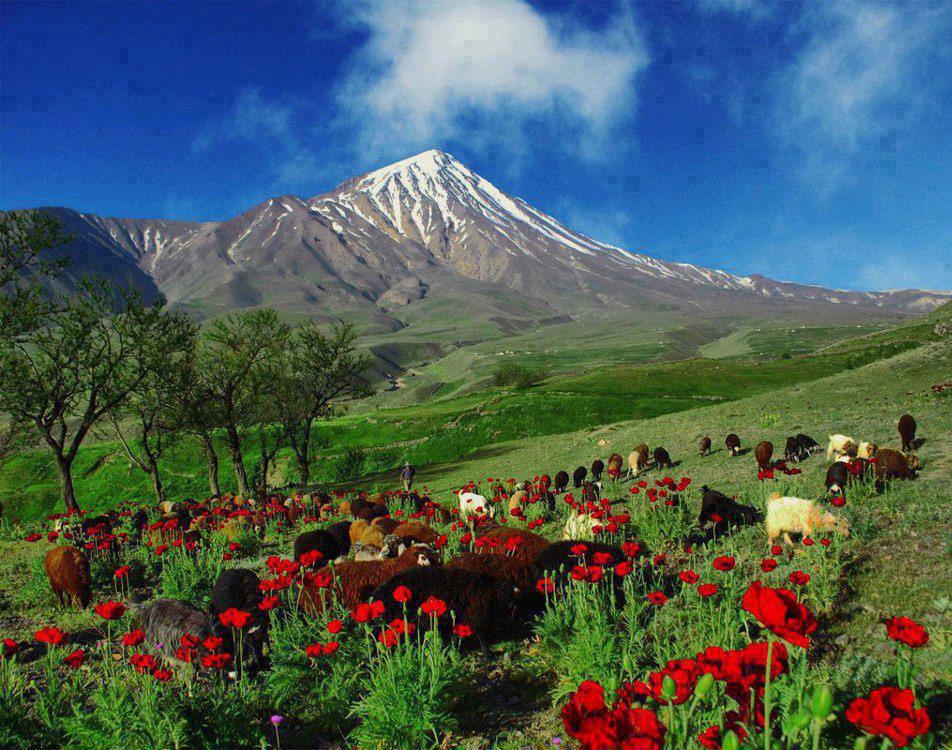Included in agricultural production are animal products. The most important animals have been traditionally sheep and to a lesser extent goats. Goats are not a readily marketable commodity anymore, and they cater to special needs for their hair and wool, particularly the angora goat, the source of mohair. Their numbers, once in millions, are steadily dropping due to a shrinkage of the market and the extensive damage they cause to the pastures and wood lands.
Sheep on the other hand are not only expanding in numbers, but they are also gaining in importance as an export commodity. The meat can now travel to distant internal and external markets, refrigerated or frozen, generating vast income for the Kurdish producers. The Middle Eastern market preference for fresh meat guarantees a ready market for Kurdish fresh lamb-a market presently denied to geographically more remote international producers like Argentina, New Zealand and Australia, whose live sheep exports to the area becomes economical only after the local annual live supplies have run out.
The wool used for local weaving now supports a growing mechanized textile industry. Sheep have always been the most import source of wool and continue to be even more so at present. Cows and bulls are found in moderate numbers in the villages, supplying milk and meat, but also pulling power. As mechanical motors replace them, the trend for drinking cow's milk instead of sheep's should prevent any drastic drop in the bovine population, if not actually increase it. The traditional excellence ascribed to Kurdish dairy products in medieval reports, however, pertain only to the sheep products. Local cheeses, yoghurt, curds, buttermilk, butter, and clarified butter (rowan, used exclusively for cooking) have a distinctly pleasant flower-like scent that has been the traditional hallmark of the Kurdish dairies, but more in the past than now.
Increasing numbers of livestock are fed by farm by products hay, stalks, and the like-and no longer graze the wild flower beds that naturally imparted the distinctive scent of dairy products. Wild pigs and boars are very common, but are shunned in the meat market, as ham is forbidden by the Islamic dietary laws, and the non-Muslim Kurds have been reluctant to add one more point of friction to their delicate relationship with the Muslims. In the more remote areas, boars and pigs are consumed by hunters of all religious affiliations. They are not however sold in the market. Even though there is a good potential for the export of pork products to nearby Europe, it is doubtful that there is much future for this industry in Kurdistan.
While the prospects for expanding the economic output of the pastures are at the end limited, the farm lands and orchards have vast potential to meet local dietary needs and as exportable commodities. Great tracts of fallow pasture lands can be brought under intensive agriculture using the rich surface, subsurface, and precipitant water resources.
Further Readings and Bibliography: Mary Virginia Harris, "Glimpses of an Iron Age Landscape: Plants at Hasanlu," Expedition 31.2-3 (1989); E. R. Guest, C. C. Townsend, and A. al-Rawi, eds., Flora of Iraq, 6 vols. (Baghdad: Ministry of Agriculture, -1966-85); B. Gilliat-Smith and W.B. Terril, "On the Flora of the Near East," Bulletin of Miscellaneous Information of the Royal Botanic (Kew) Gardens 7-10 (1930).
Sources: The Kurds, A Concise Handbook, By Dr. Mehrdad R. Izady, Dep. of Near Easter Languages and Civilazation Harvard University, USA, 1992

